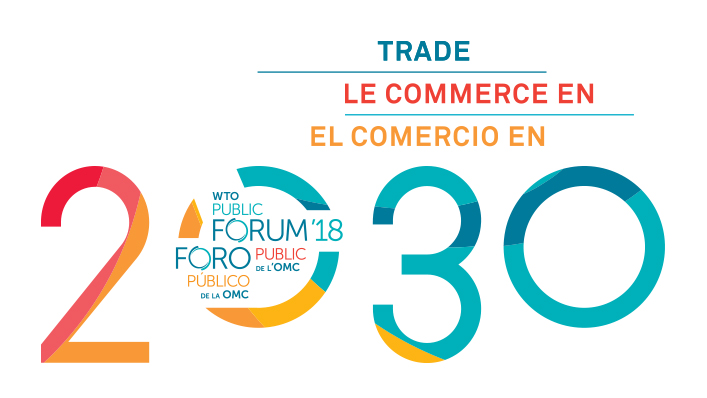Blockchain and the future of trade: Fostering sustainability and inclusiveness through innovative distributed ledger technologies
4 Oct 2018 02:00h
Event report
The panel focused on the various applications of blockchain within the context of trade and fostering sustainability. It debated current applications but was predominantly looking into both the short-and-long-term future concerning the applications and implications of the technology.
Mr David Shrier (Associate Fellow, Saïd Business School, University of Oxford; CEO, Distilled Analytics) focused on the possibilities of tracing supply chains using blockchain. He cautioned that a crucial point is the data that is fed into the blockchain application and that it will be important to ensure that the data is of high quality. He highlighted that there are five elements to describe data quality: relevancy, recency, range, robustness, and reliability. These five Rs ensure that the data going into the system when using blockchain for managing trade and supply chains is suitable and of high quality. He also pointed out that this can be made less labour-intensive by using artificial intelligence (AI) to automate the data input. In response to a question form the audience, he emphasised that the advantage of blockchain, in comparison to existing technologies, is that the information is stored in a distributed way. This means that many copies of the same data base are maintained and that the copy-holders communicate with each other when changes are made. This makes the system more fraud resistant. However, he also emphasised that blockchain is not magic; it will not solve the basic problems that are faced by every computer system, such as ‘garbage in and garbage out’.
Ms Zalfa El-Harake (Zalfa & Company) described herself as being an expert in supply chains, not in blockchain. However, she emphasised that the ability to understand when it is useful to apply blockchain to a supply chain is crucial. She used a case from the agricultural sector to illustrate the key advantages, such as traceability and sustainability, of blockchain. She emphasised that you cannot cheat or change a blockchain, unless many people can be convinced to do this at the same time. This makes the technology very useful for a number of applications. In terms of the uptake of the technology, she stressed that multinational companies need to be convinced with well thought-out proposals that clearly show the competitive advantage and a cost-benefit analysis of the application of the technology. All in all, El-Harake described blockchain as a new technical solution that can be easily implemented in the field via mobile phone access for example.
Mr Mac MacGary (Chairman Sweetbridge) described his organisation as an open source foundation that is building second layer protocols for blockchain. He explained how a couple of questions drive his current work, such as: How do we radically reduce costs throughout the supply chain (improving upon cloud and P2P)? How can we improve liquidity by freeing up capital? How do we make the trade system fairer, by using a distributed technology that alters the power balance within supply chains? He admitted that many cloud computing applications offer many of the same benefits as blockchain. However, blockchain offers additional advantages because it creates economic incentives to align behaviour across the supply chain, such as tokenising goods to ensure that a fair price is paid. Further, blockchain applications can be useful to eliminate intermediaries and share the resulting profit with consumers and producers. Similarly, bockchain might also be useful in eliminating foreign currency costs in trade transactions.
Mr Jazz Kang (Market Strategy Executive, Head of Trade Finance and Trade Logistic Solutions, Swisscom Blockchain) strongly advocated for the adoption of blockhain technologies. He emphasised that trust in the technology, which is still lacking, can be created by working through reputable organisations, such as Swisscom Blockchain. Kang went on to identify a few relevant use-cases for blockchain: supply chain management (auditing and managing changes), reducing the use of paper in cross border transactions and creating greater efficiency. He also stressed that one of the key issues lies in the adoptation of the technology, which requires bringing everyone, including competitors, to the table. In general, Kang predicts a wide uptake of blockchain technology, especially in the banking sector and that its use will become available for everyday banking customers within the next few years.
Mr Marcelo Garcia (Crypto Explorers) stressed that in business transactions, efficiency is becoming more and more relevant, especially where resources are very limited. Blockchain will be crucial with regard to trade (supply chains). He argued that the technology enables establishing a kind of automatable trust and stressed that ‘everything that can be automated, will be automated’, to for example, eliminate the need for intermediaries.
Related event

